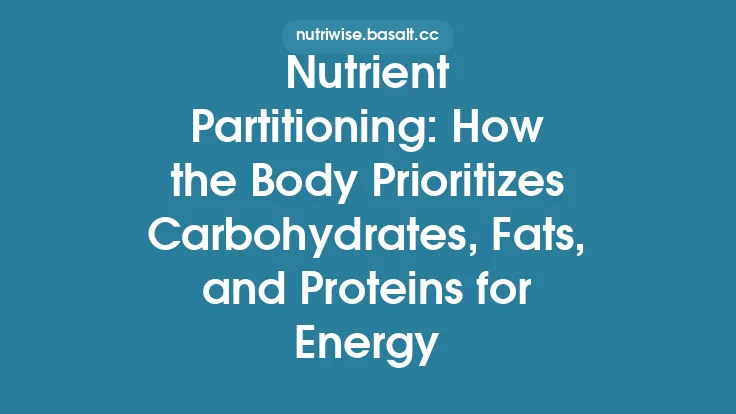When you set a nutritional target—whether it’s adding lean muscle, sustaining long‑distance effort, or simply feeling your best—you’re really deciding how much of each macronutrient (protein, carbohydrate, and fat) you’ll rely on for fuel, repair, and overall function. While the basic science of macronutrients remains constant, the proportion you allocate to each can shift dramatically depending on the physiological demands of your chosen goal. Below is a deep dive into how to customize those ratios for three common objectives, the rationale behind each adjustment, and practical ways to put the theory into everyday eating patterns.
Muscle Gain: Tailoring Your Ratio
Why protein takes center stage
Muscle hypertrophy is driven by a net positive protein balance: the rate of muscle‑protein synthesis (MPS) must exceed muscle‑protein breakdown (MPB). To tip the scales, you need an ample supply of essential amino acids, especially leucine, which acts as a molecular trigger for MPS via the mTOR pathway.
Recommended protein intake
- Range: 1.6–2.2 g protein per kg body weight per day (≈0.73–1 g per lb).
- Distribution: Aim for 20–30 g of high‑quality protein in each main meal, spaced roughly 3–5 hours apart, to maintain a sustained anabolic environment.
Carbohydrate considerations
Carbs are not merely “energy”; they replenish glycogen stores depleted during resistance training, which in turn supports training volume and intensity. Adequate glycogen also spares protein from being oxidized for fuel, allowing it to stay focused on repair.
- Range: 3–6 g carb per kg body weight per day (≈1.4–2.7 g per lb).
- Timing: Prioritize a carbohydrate‑rich snack or meal (≈30–60 g) within 30–60 minutes post‑workout to accelerate glycogen resynthesis and enhance the insulin‑mediated uptake of amino acids.
Fat’s role
Dietary fat supports hormone production (including testosterone and growth hormone) and provides essential fatty acids for cell membrane integrity.
- Range: 0.5–1.0 g fat per kg body weight per day (≈0.23–0.45 g per lb).
- Quality: Emphasize monounsaturated (olive oil, avocado) and polyunsaturated fats (fatty fish, walnuts) while limiting saturated fat to ≤10 % of total calories.
Putting it together
A typical muscle‑gain macronutrient split might look like 30 % protein, 45 % carbohydrate, 25 % fat. For a 80 kg (176 lb) individual consuming 3,200 kcal:
- Protein: 240 g ≈ 960 kcal
- Carbohydrate: 360 g ≈ 1,440 kcal
- Fat: 89 g ≈ 800 kcal
Adjust the percentages upward for carbs if training volume is exceptionally high, or upward for protein if you’re in a caloric surplus and want to maximize lean mass accretion.
Endurance Performance: Optimizing Carbohydrate and Fat Balance
Fueling prolonged effort
Endurance activities (running, cycling, swimming) rely heavily on oxidative metabolism. Carbohydrates provide rapid ATP via glycolysis, while fats supply a high‑yield, slower‑burning energy source that becomes dominant as glycogen stores dwindle.
Carbohydrate priority
- Range: 5–10 g carb per kg body weight per day (≈2.3–4.5 g per lb).
- Periodization: During heavy training weeks, aim for the upper end of the range; during taper weeks, the lower end may suffice.
- Pre‑exercise: A 1–4 g carb per kg body weight meal 3–4 hours before a long session ensures liver glycogen is topped off.
Protein for recovery
While protein isn’t the primary fuel, it remains essential for repairing micro‑tears in muscle fibers and supporting immune function, which can be compromised by prolonged stress.
- Range: 1.2–1.6 g protein per kg body weight per day (≈0.55–0.73 g per lb).
- Post‑exercise: 15–25 g of protein within 30 minutes after the session aids in MPS and glycogen‑protein coupling.
Fat as a secondary fuel
Endurance athletes often benefit from a modestly higher fat intake to improve mitochondrial efficiency and spare glycogen.
- Range: 0.8–1.2 g fat per kg body weight per day (≈0.36–0.55 g per lb).
- Adaptation: Some athletes incorporate “fat‑adapted” phases (higher fat, lower carb) to enhance fat oxidation, but this should be approached deliberately and monitored for performance impact.
Typical split
A common endurance‑focused ratio is 20 % protein, 55–60 % carbohydrate, 20–25 % fat. For a 70 kg (154 lb) cyclist consuming 2,800 kcal:
- Protein: 112 g ≈ 448 kcal
- Carbohydrate: 420 g ≈ 1,680 kcal
- Fat: 78 g ≈ 702 kcal
Fine‑tune the carbohydrate proportion based on training intensity, duration, and environmental conditions (heat, altitude).
General Wellness: A Balanced Approach
The “all‑rounder” mindset
When the primary aim is overall health, energy stability, and sustainable body composition, the macronutrient distribution should support metabolic flexibility— the ability to efficiently switch between carbs and fats for fuel—while providing enough protein to preserve lean tissue.
Protein for maintenance
- Range: 1.0–1.4 g protein per kg body weight per day (≈0.45–0.64 g per lb).
- Distribution: 20–30 g per meal, spread across 3–4 meals, helps maintain satiety and muscle mass.
Carbohydrate for brain and activity
- Range: 3–5 g carb per kg body weight per day (≈1.4–2.3 g per lb).
- Focus: Prioritize complex, fiber‑rich sources (whole grains, legumes, vegetables) to support gut health and steady glucose release.
Fat for hormone and cell health
- Range: 0.8–1.0 g fat per kg body weight per day (≈0.36–0.45 g per lb).
- Emphasis: Include omega‑3 fatty acids (EPA/DHA) from fatty fish or algae, and maintain a balanced omega‑6 to omega‑3 ratio (≈4:1 or lower).
Typical split
A well‑rounded wellness ratio might be 25 % protein, 45 % carbohydrate, 30 % fat. For a 65 kg (143 lb) adult eating 2,200 kcal:
- Protein: 138 g ≈ 552 kcal
- Carbohydrate: 248 g ≈ 992 kcal
- Fat: 73 g ≈ 656 kcal
This distribution supports stable blood sugar, satiety, and adequate micronutrient intake from diverse food groups.
Practical Steps to Implement Goal‑Specific Ratios
- Calculate your baseline caloric needs
Use a reputable resting metabolic rate (RMR) estimator and factor in activity level to obtain a maintenance calorie figure.
- Add or subtract calories based on the goal
- Muscle gain: +250–500 kcal/day
- Endurance training: +0–250 kcal/day (depending on volume)
- General wellness: maintain or modestly adjust for weight stability
- Apply the macronutrient percentages
Multiply total calories by each percentage, then convert to grams (protein & carbs = 4 kcal/g, fat = 9 kcal/g).
- Choose whole‑food sources
- Protein: lean meats, poultry, fish, eggs, dairy, legumes, tofu, tempeh
- Carbohydrate: oats, quinoa, sweet potatoes, fruits, vegetables, beans
- Fat: nuts, seeds, olive oil, avocado, fatty fish
- Plan meals around training windows
Align higher‑carb meals with pre‑ and post‑exercise periods for muscle‑gain and endurance athletes, while keeping overall distribution consistent.
- Adjust gradually
Modify one macronutrient at a time (e.g., increase carbs by 10 % while reducing fat proportionally) and observe performance, recovery, and body composition over 2–4 weeks.
Monitoring and Fine‑Tuning Over Time
- Performance metrics: Track strength gains (e.g., 1RM), endurance markers (pace, VO₂max), or subjective energy levels.
- Body composition: Use periodic measurements (skinfolds, bioelectrical impedance, or DEXA) to gauge lean mass vs. fat changes.
- Recovery cues: Note muscle soreness, sleep quality, and resting heart rate trends.
- Adjustments:
- If strength plateaus, consider a modest protein increase (up to 2.4 g/kg) or a slight carbohydrate boost.
- If endurance performance stalls, raise carbohydrate intake by 10–15 % and evaluate fat intake for possible reduction.
- For general wellness, if hunger spikes or energy dips, examine fiber intake, meal timing, and the balance between carbs and fats.
Consistent, data‑driven tweaks ensure the macronutrient ratio remains aligned with evolving training loads, lifestyle changes, and personal health objectives.
By understanding the distinct metabolic demands of muscle hypertrophy, prolonged aerobic effort, and everyday vitality, you can purposefully sculpt your macronutrient ratios to serve each goal. The key lies in starting with evidence‑based ranges, selecting nutrient‑dense foods, and iteratively refining the balance as your body responds. This customized approach transforms generic nutrition advice into a precise tool that fuels the outcomes you care about most.




